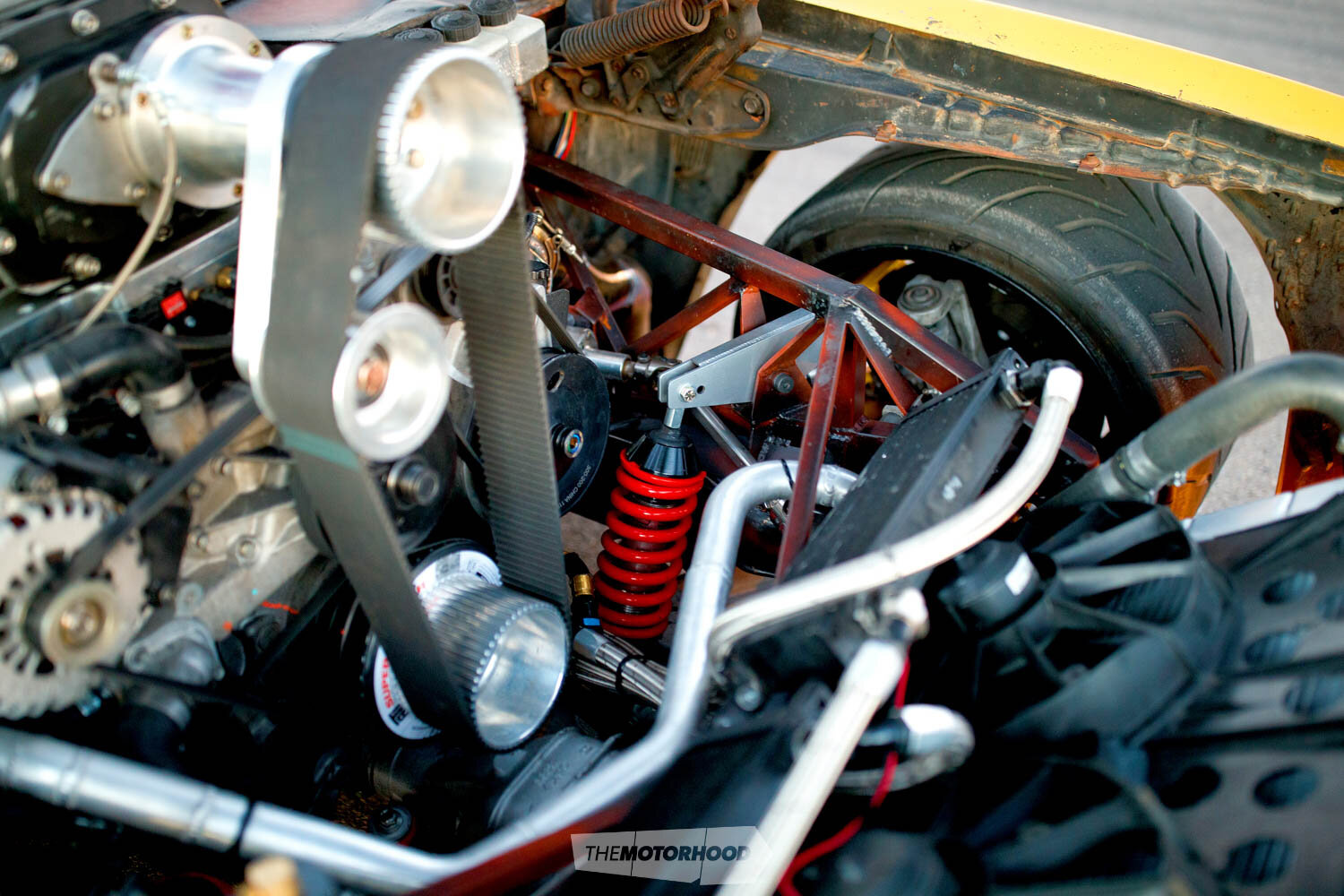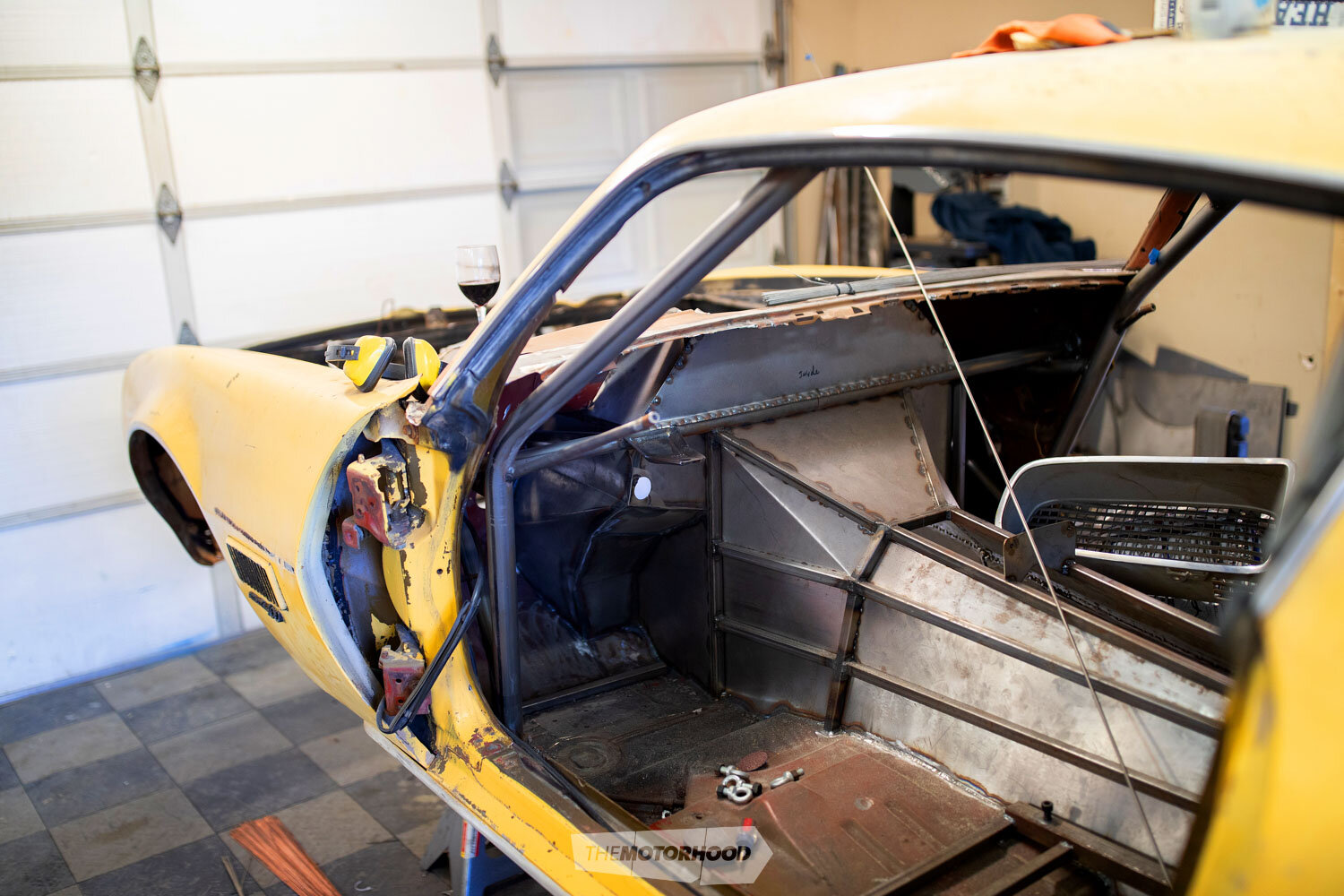What’s got four-wheel drive, a blown LS, and was built by a Kiwi? This radical Pontiac, that’s what!

Working as lead mechanic for rally legend and internet sensation Ken Block is a pretty cool gig for Kiwi-born Gregg Hamilton. Even if you don’t know Block by name, chances are you will have seen his ‘Hoonicorn’ Mustang doing insane things on the internet, frying all four tyres as it slides around in Block’s series of Gymkhana videos.
Despite Gregg’s experience working for many of the world’s top rally teams in the UK before shifting to Las Vegas 15 years ago, he’s a V8 guy at heart. Having fallen in love with the early 1970s Pontiac Firebird shape when he landed stateside, Gregg knew that, as soon as he had the time, he’d build one for himself — and he did: a 1970 version packing a twin-turbo LS power plant. Thanks to the car’s custom widebody, ground-hugging stance, and immaculate finish, it still gets plenty of internet love today, even after being on the road for a few years.
The only problem with the car, dubbed ‘Fire Chicken’, is that it’s too perfect, to the point that, understandably, Gregg’s not willing to abuse it as much as he’d like for fear of damaging the flawless finish.

Being involved in the four-wheel-drive Hoonicorn project gave Gregg the idea of doing something similar with another Poncho, and, three years ago, the perfect donor was sourced: a 1971 Pontiac Formula 400, which was found baking in the sunshine in Nevada. It had been there for a decade but had clearly been through a flood or similar, as it was caked in mud and had become a home to rats. That perfect natural patina didn’t deter Gregg though; rather, it encouraged him to do whatever he liked with no regard for what anyone else thought.
Once the rat debris had been removed, Gregg modified a pair of C6 Corvette subframes to slide under the body. However, rather than throw the C6 driveline in, he had completely different ideas.
Having long been involved in high-performance Japanese imports, he hand-selected parts that he knew would work to transform the car from ordinary to extraordinary. The main components in this were the Nissan Skyline R32 GT-R five-speed gearbox and R33 GT-R transfer case. Yes, ladies and gentlemen, he was building this one into a four-wheel drive.
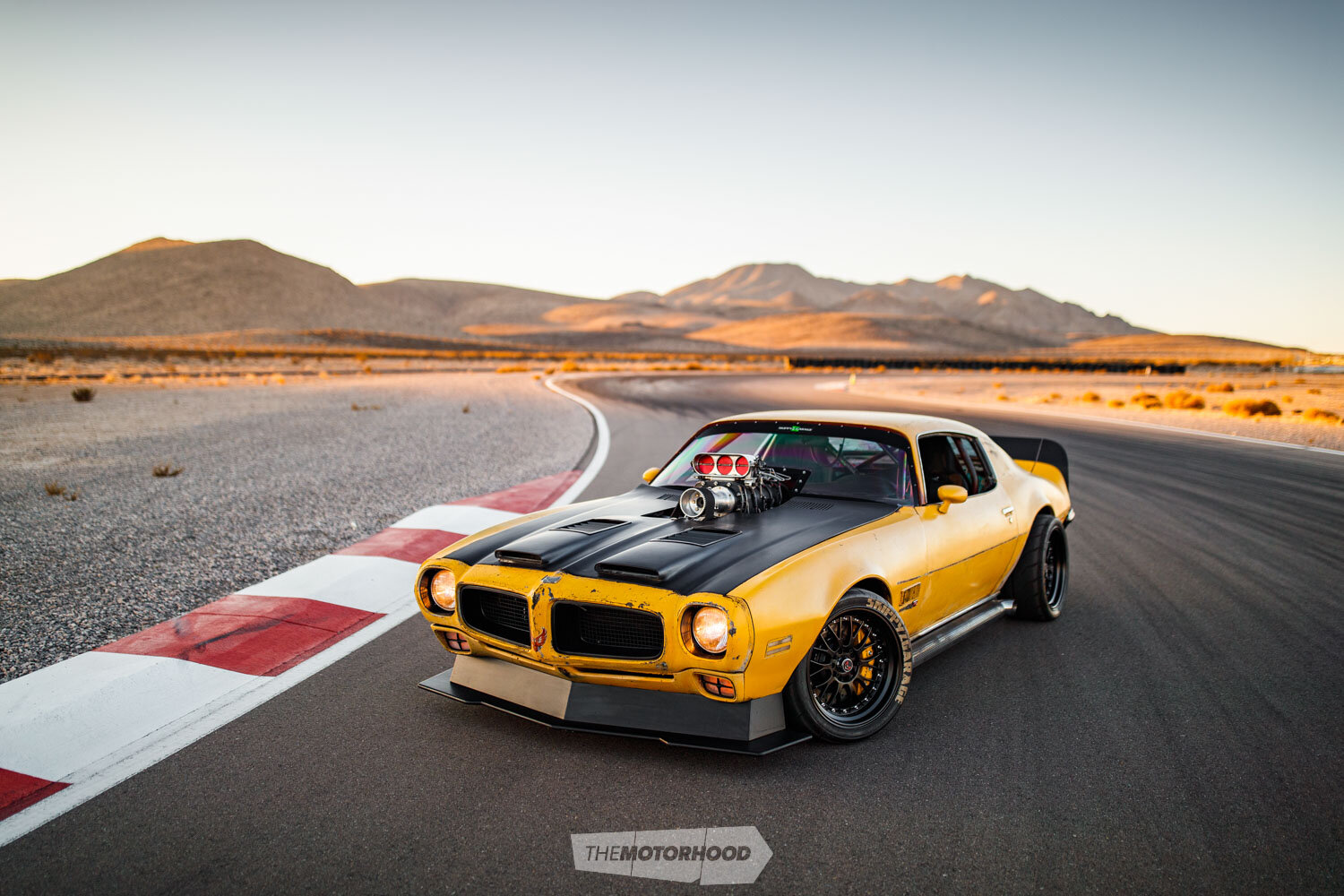
To fit the Nissan Infiniti Q45 rear diff into the front of the Pontiac meant moving the engine rearwards by 18 inches, which obviously was no two-minute job but was something that Gregg was more than capable of — although he does say that cutting out so much of the car was slightly scary at the time. That front diff is matched with a Nissan 300ZX rear diff out the back, which was adapted to the Corvette subframe assembly.
While most four-wheel drives such as this run the front diff offset for engine clearance, Gregg, knowing that he’d need to have custom axles made anyway, positioned his right in the centre. The complexities of getting a driveshaft to this from the transfer case were worth it for the ease of getting axles going forward, as the move allowed for identical axles to be used at all four corners.
Like so many of the components, the engine, a 5.3-litre LS, was sourced from a junkyard. Then, before a Weiand supercharger and Holley Dominator EFI system were attached, the block was filled with aftermarket crank, rods, and heads. The integration of an aftermarket controller for the Nissan centre diff gives the ability to control the amount of power sent to the front end. While it’s not been on a dyno, the combo is estimated to be producing around 600hp with a shitload of torque to match.
Gregg says that it’s a budget build, and that may be true — although, looking at the engineering that’s gone into it, it’s far from a simple one. That complexity flows into the suspension, where C6 Corvette uprights have been used, but, rather than leaving them alone, Gregg’s linked them to custom inboard coilovers to allow room for the axles. A Summit Racing aluminium radiator and Corvette-sourced set of electric fans now reside in the extra room between the engine and the bumper.
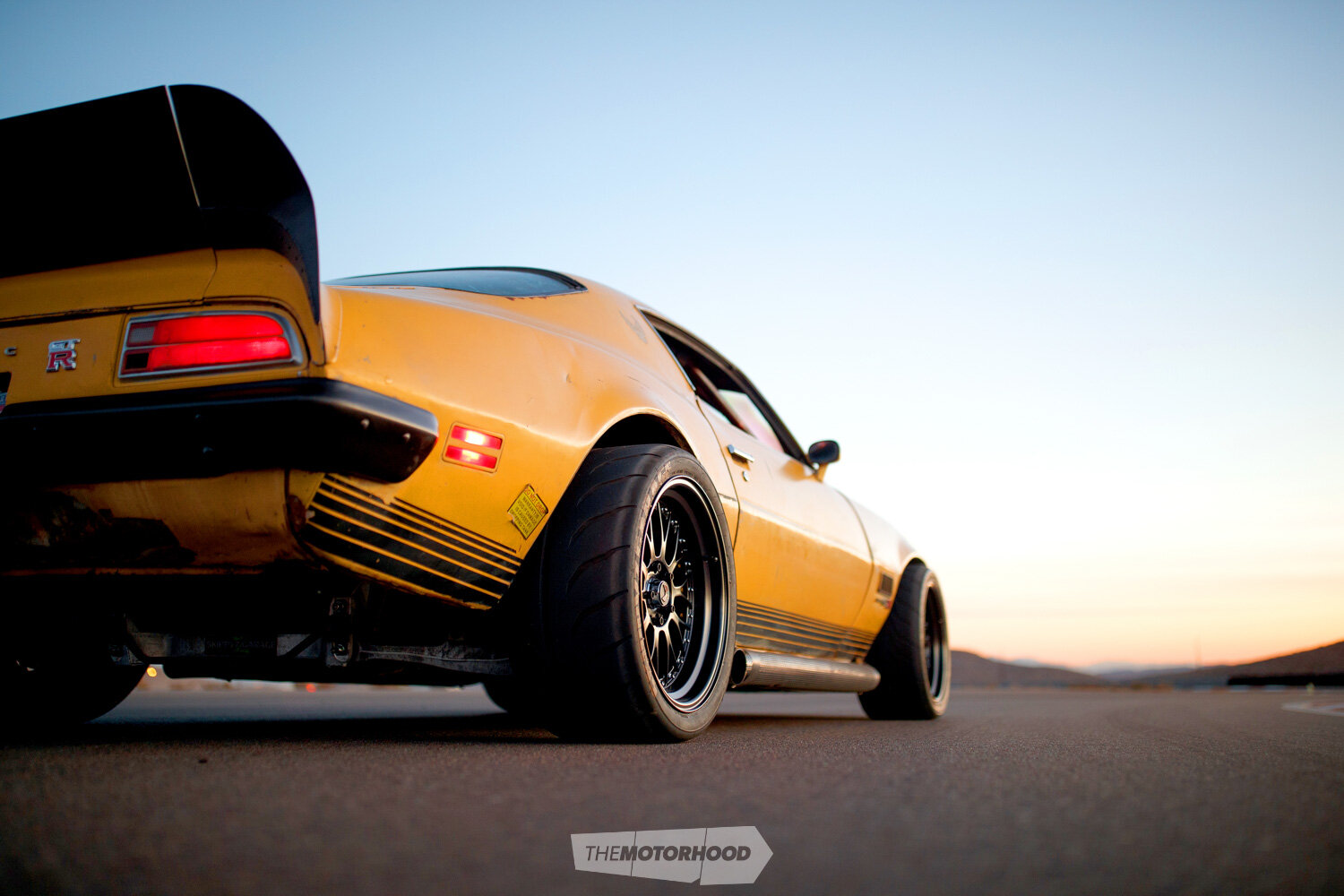
The interior is all about function rather than form, and, while the fab work is again top notch, part of the car’s appeal is in its raw finish. Besides, there’s no need for creature comforts when you’re sliding sideways with all four wheels spinning. The gauges did need to sit somewhere, though, so a Toyota Celica dashboard was rigged up to fit and the whole lot is cocooned in a substantial roll cage.
The exterior is equally brutal, the cracked yellow paint a testament to the car’s hard life sitting in the relentless sun, and the 285-wide tyres that extend from the bodywork leave no doubt to the car’s intentions. Mind you, the blower sitting back through the base of the windscreen also gives off a very battle-ready vibe, as do the custom front splitter and ducktail rear wing. The upshot of the car’s extreme engine positioning is the advantage that it gives to the car’s weight distribution and handling — something that’s not been checked on the scales, but simply feels about right, and, let’s be honest, Gregg should know.
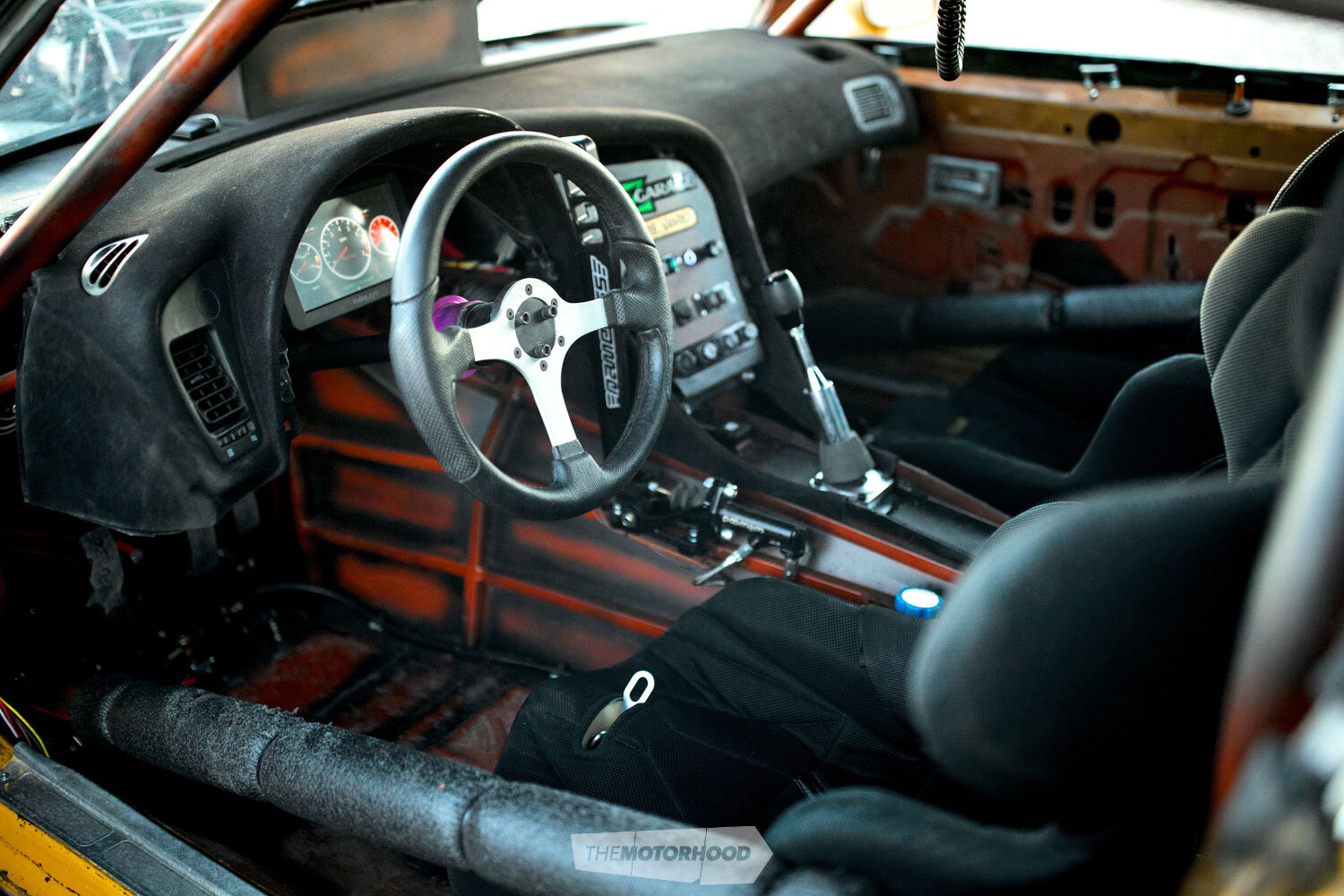
The car was two years in the making, between Gregg spending time building and maintaining Block’s various rally and Gymkhana cars and attending events or filming around the world. Now that it’s completed, he states that it’s nice to not have to clean it but simply to focus on the mechanical side.
It was never built to a rendering or drawing, but was simply built from ideas that were in Gregg’s head, but the result is something out of this world. The complete disregard for what anyone else thought is refreshing to see, and, obviously, there was plenty of Kiwi know-how and can-do required to make it into a reality.
Of course, the car doesn’t just look the business standing still; it goes just as well and sounds even better, so, next time you’re online, we suggest you jump on Hoonigan’s YouTube page and dial in ‘All Wheel Drive Swapped Supercharged 1971 Trans-Am’. There, you’ll see Gregg giving photographer Larry Chen — who’s responsible for the awesome pics you see here — the full rundown on the car before giving him a scare around the track at SpeedVegas. Gregg’s use of rally-esque knowledge and love of building things out of the ordinary are refreshing in this day and age of cookie-cutter builds. We’re just hopeful that a bit of his Kiwi know-how will rub off on Kiwis back home!

Gregg Hamilton
Age: 49
Occupation: Head mechanic — Hoonigan
Previously owned cars: 1979 Firebird Trans Am, 2008 Corvette Z06, 1978 RX-7, 1986 911 Supersport, Peugeot 205 GTI, 2007 Subaru STi, 1975 Ford van, 1980 Chevy K10 pickup truck, Mitsubishi 3000 GT turbo, Mk1 Escort, Ford Anglia, 1965 Datsun Bluebird, 1972 LJ Torana GTR
Dream car: Pagani Zonda R
Why the Formula 400? My other Pontiac was too perfect
Build time: 24 months
Length of ownership: Four years
Gregg thanks: My wife for putting up with more than one car build over the years

1971 Firebird Formula 400
Engine: 5.3-litre LS, Weiand 6-71 supercharger, cast alloy bug catcher, Texas Speed heads, Texas Speed cam, forged rods, forged pistons, Holley Dominator ECU, three-inch blower drive, ATI Super Damper, Holley brushless fuel pump, aluminium three-core radiator, custom fuel tanks
Driveline: Nissan Skyline R32 GT-R gearbox, Nissan R33 GT-R diff control pump, Active Centre diff controller with G-sensor, alloy 12-pound flywheel, Powertrain Technology triple-plate clutch, Nissan R200 front diff, Nissan 300ZX R230 rear diff, custom driveshafts
Suspension: C6 Corvette front suspension arms/uprights, C6 Corvette rear suspension arms/uprights, QA1 two-way adjustable shocks
Brakes: Wilwood floor-mounted pedal box, Z06 six-piston front calipers, Z06 four-piston rear calipers
Wheels/tyres: 18×10-inch XXR 522 wheels, 285/30R18 Toyo tyres
Exterior: Custom splitter, custom wing
Chassis: C6 Corvette front subframe, modified C6 Corvette rear subframe
Interior: Kirkey alloy race seats, CB radio, 12-point roll cage, six-point harness, Holley digital display
Performance: Approx. 600hp






